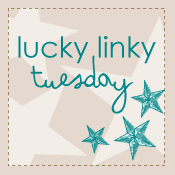I just posted a pair painting tutorial a couple of weeks ago, so why do another one?
Because this one is for my Paint Parties. I’m so excited to host these parties. Right now they’re local in the Sacramento area. Everyone brings a munchie & a beverage to share, and I guide them step-by-step thru a painting on canvas. I’ll write more about the Parties and post pics as they come up.
So I needed a painted pair on canvas. I usually paint my tutorials on watercolor paper – the ones I do for you guys.
Watercolor paper is cheaper, if you’re just trying painting for the first time. It has a good background texture. And it’s pretty forgiving. I always used watercolor paper when I was teaching classes.
Anyway, this pear wound up having a couple more colors than this one.
It you’ve already painted this one, you could certainly add some more shading, if you want.
Okay – the canvas.
Exciting, huh?
Just basecoat with a warm neutral. I used Ceramcoat Bamboo.
Next I glazed the canvas with Timberline Green mixed with FolkArt Floating Medium.
You can make it as dark or light as you want.
The cool thing about Floating Medium is it allows you to move the paint around for a while. So if it’s too dark, you can wipe it off.
Paint by itself dries too quickly to do that.
These are the colors I used for this painting -
- Timberline Green – a pea green
- Custard Yellow – creamy yellow
- Antique Gold
- Raw Sienna
- Burnt Umber
If you follow my tutorials, you’ll notice I use the same colors over and over. And over.
You’ll get comfortable with them after a while. You’ll know what color works for shading, what works for highlighting. What works when you mix it with another color.
You will. I promise!
Now paint a big ol’ pear with Custard. Start with the bottom and paint a fat circle.
Think ‘bottom of a Snowman’.
Then paint a dome on top of the fat circle.
It’s that simple.
Start a little smaller than you think you’ll want.
You can always make it bigger.
Next, add some leaves.
You can follow where I put mine, or go really crazy and put them where you want.
I always feel like Bob Ross when I say that.
“It’s your happy little painting.”
Did you watch him on PBS? I think they still broadcast some of his great oil paintings.
What a great guy he was.
Starting on the outer edges, add some Floating Medium to your brush, pick up some Antique Gold and start filling in.
You don’t have to fill every square inch. In fact, it’ll look better if you don’t.
Okay. I’ll admit. This looks a little blotchy right now.
But notice where I left the Custard showing thru.
See it?
It’s on the fat part of the pear. The roundest part.
This will just save you a step so you don’t have to go back and highlight.
That is, if you don’t cover the entire pear with Antique Gold.
For the leaves you can basecoat them with just Timberline Green.
Or you can mix Timberline Green + Antique Gold.
Or a little of both.
It all works.
Go back and add some more Antique Gold to the pear.
The 2nd coat will actually add shading.
At the top of the pear, make a little curve for the stem. With Antique Gold.
Here’s a close up of the leaves with a mixture of green and gold.
Add a curved line with Custard to create the vein.
For the stems, I mixed Burnt Umber with Antique Gold.
And then I thought I was finished.
Seems okay, doesn’t it?
I set it down on the floor.
I walked past it for a few days.
But something wasn’t quite right. Or finished.
Something.
I couldn’t put my finger on it.
I wanted a painting that seemed simple enough for people to try. But not so simple it looked stupid.
Another day passed.
And then I just couldn’t take it.
So I added a couple of leaves to the top.
Then I started glazing with Floating Medium and Raw Sienna.
Raw Sienna is the perfect shading color for Antique Gold.
Now it seemed richer. More . . . pear-like.
Oh Heck! Why not?
Some Burnt Umber glaze – just here and there. Just to bring some of that fabulous brown you see in pears.
Okay. Now I’m done.
Finished.
Finis!
It’s back on the floor in the hall again.
This time I turned the painted side toward the wall so I don’t look at it anymore.
And so I can link up to these great parties!
all crafts Handmade Projects ~ Tip Me Tuesday



























Love the lesson and the Give thanks pears are lovely!!
ReplyDeleteThis is a really great tutorial. I still have to look up a few things since I am not painting savy (I really wish my mom had taught me to paint and be artistic like my little bro, she only taught me to craft), but it's written very well, and I actually learned/understood a concept I never really figured out! I always wondered why there was so much visual texture to these types of paintings, and now I know!
ReplyDeleteGreat tut as always my friend. Hummmm for some reason I'm hungry for pears...LOL!!!
ReplyDeleteHugs,
Regi